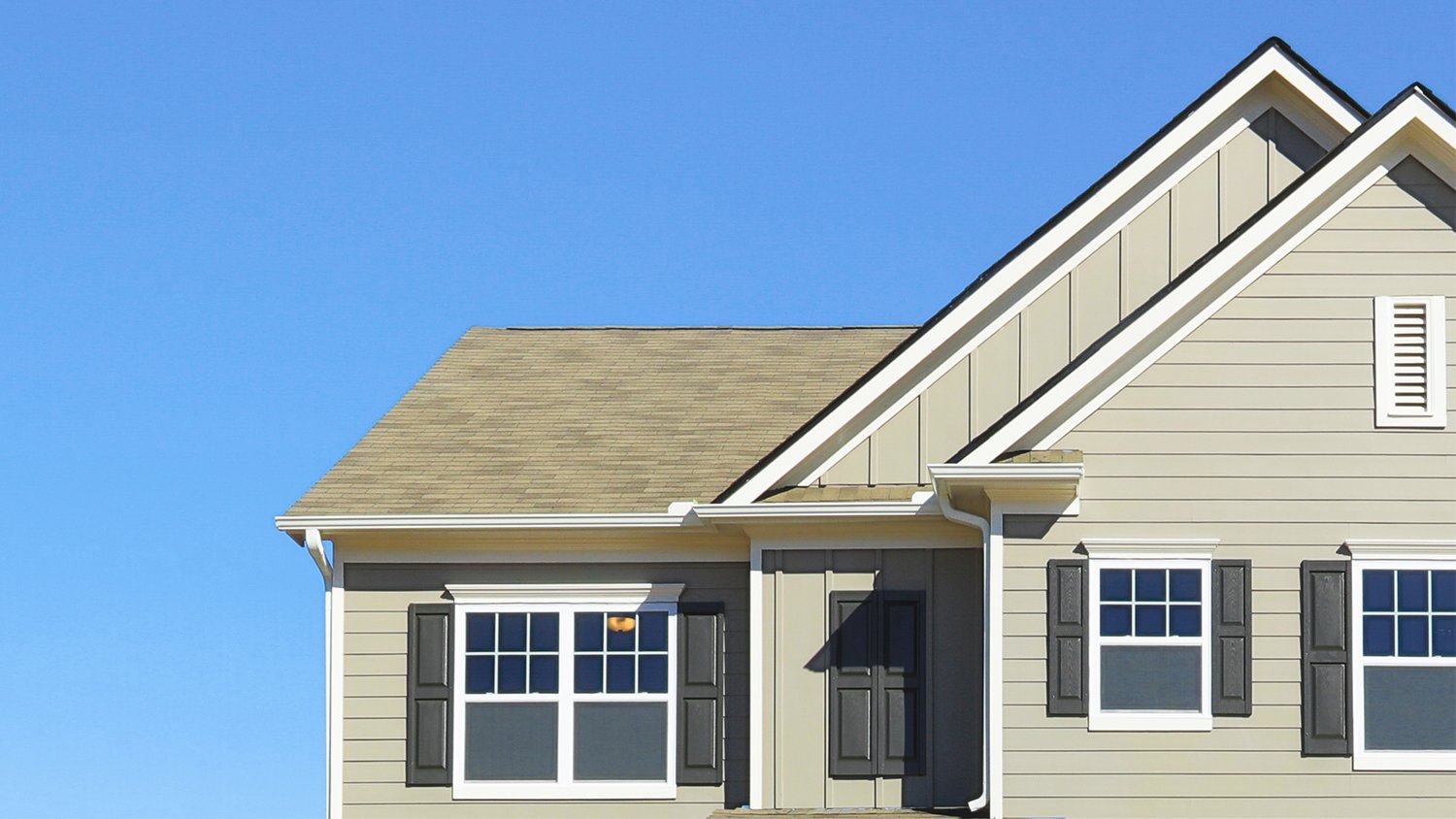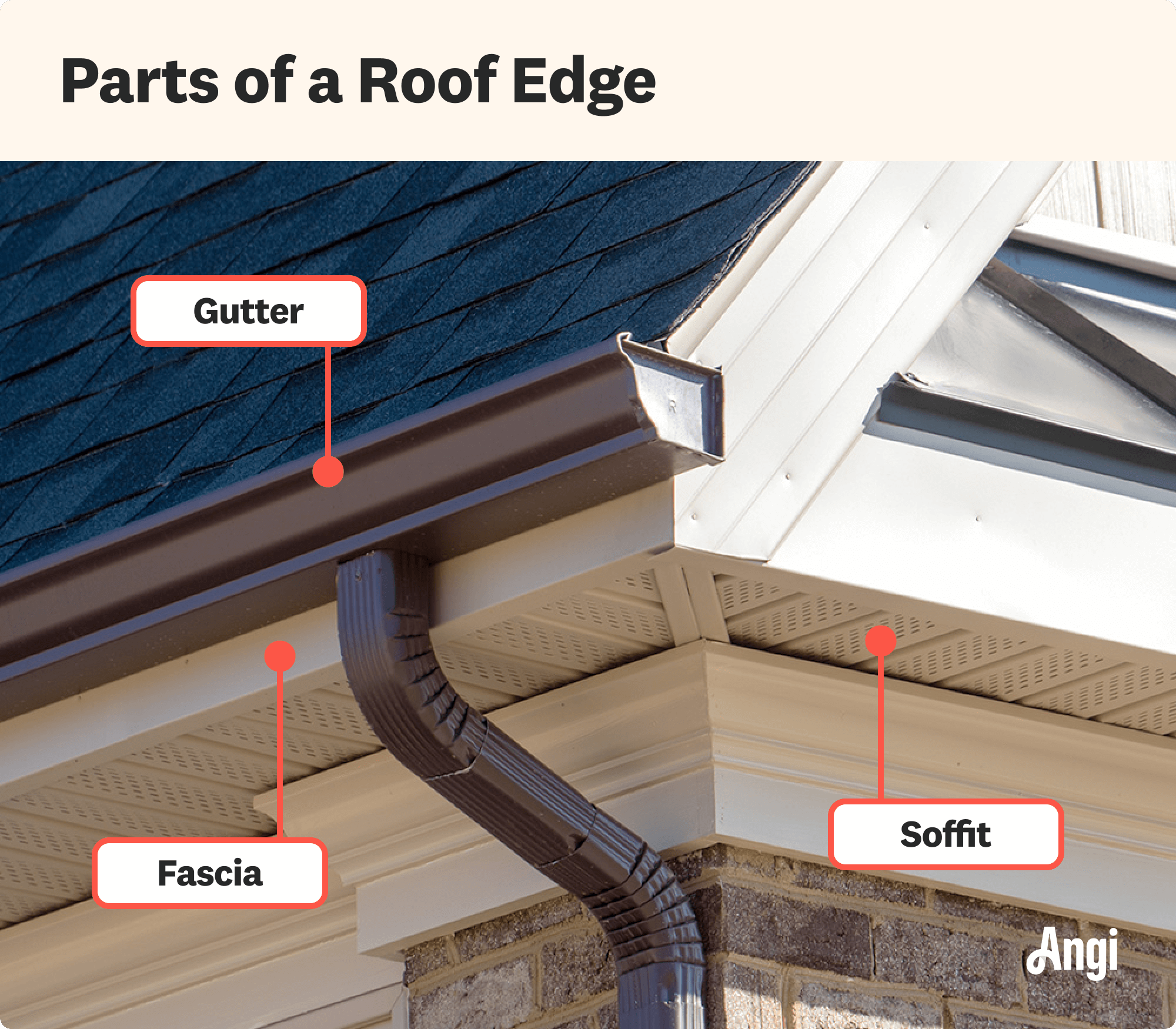
A metal roof can defend your home against Ohio’s varying weather conditions. Learn how much a metal roof costs in Columbus, OH.
Gutters are great, but your soffit and fascia should come first—literally


Soffits and fascia are essential roof components that protect the roof and attic from rain, wind, and snow.
You can replace soffits without removing the fascia, but it’s best to replace both to avoid damaging the fascia.
Install soffits and fascia before installing gutters.
When it comes to keeping rainwater away from your home’s foundation, gutters get all the credit. But your soffits and fascia play a vital role in protecting your roof and home from water damage, too. When it’s time to replace your soffits, you may be wondering: can you replace soffits without removing fascia? In this guide, we’ll answer that question and many others that may come up when you need soffit replacement.

Let’s take a deeper dive into what soffits and fascia boards are and how they function.
Soffits are located underneath the eaves of your roof and span the gap between the edge of your roof and your siding. They not only help ventilate your roof but also keep critters like squirrels and birds out of your attic space. The fascia is a board that runs horizontally at the end of your roof edge and holds up your gutters.
It’s possible to replace soffits without removing the fascia, but since the soffits tuck under the bottom edge of the fascia, getting to them can be a challenge, and it’s possible to damage the fascia in the process. As such, it’s best to remove the fascia before replacing the soffits. Most professionals will also remove the fascia before replacing soffits to avoid damage.

Replacing your soffits is usually a pretty straightforward project, but there are a few key things to consider to make sure the job goes smoothly.
Accessibility: First and foremost, consider how accessible your soffits are before attempting a DIY replacement. Soffits on the second-story eaves can be challenging and dangerous to access, so consider hiring a pro if they need replacing.
Hidden damage: Unfortunately, water intrusion at the edge of your roof is common, so there’s a good chance you’ll find water damage and rotted building materials behind the fascia and soffits. If you do, hire a pro to assess the issue and make the necessary repairs.
Old fascia boards: If it’s time to replace your soffits, it’s likely time to replace the fascia boards, too. Check the fascia for signs of damage and consider replacing both at the same time.
Soffit and fascia design: You can replace soffits without removing fascia, but only if they’re made from a flexible material, like vinyl. If they’re wood, you’ll need to remove the fascia to access the soffits.
The average cost to replace fascia and soffits is around $2,300, though the price depends on labor and the size and type of soffit and fascia material.
If your fascia and soffits are over 25 years old and you installed them alongside a new roof, you may also want to consider replacing your roof at the same time. A roof replacement costs $9,500 on average, but the total can climb to $45,000 or more, depending on the size and materials used. Calling a roofing pro for a roof inspection can help you decide if it’s cost-effective to batch the two projects together.
Fascia and soffits don't need replacement often, though you should inspect them once or twice a year. If you're comfortable working on a ladder, you can also learn how to replace fascia yourself to save money on labor fees.
Whether or not you should replace soffits and fascia before installing new gutters depends on their condition and age. If the materials are under five years old, you can safely install gutters without replacing them and go 10 to 15 years without needing additional work. Failing to replace your damaged fascia boards before installing the gutters could potentially result in premature repairs down the line.
It’s possible to replace soffits and fascia yourself if you have some experience and the materials are easy to access. DIYing the work will save you between $2,000 and $4,000, as most of the cost for soffit and fascia replacement goes toward labor.
However, making mistakes during the installation can increase the risk of roof leaks and damage to the materials underneath. Hiring a roof repair contractor near you can ensure that the project goes smoothly. Hiring a roofer is always a good idea if the work requires accessing the roof to reach materials on the second story or if you find water damage once you start removing the old materials.
From average costs to expert advice, get all the answers you need to get your job done.

A metal roof can defend your home against Ohio’s varying weather conditions. Learn how much a metal roof costs in Columbus, OH.

Dealing with a visibly damaged roof or leak? Learn about roof repair costs in Columbus to see how much you’ll need to budget for a permanent solution.

Learn about roof replacement costs in Columbus and what factors are at play to budget accurately and make sure you’re getting a fair price.

Follow these four straightforward steps to install hurricane ties. The number of ties and the demand load will impact the project.

Roof sheathing is another name for the strong layer of wood boards that are attached to your roof’s framing. Learn how much roof sheathing costs in this guide.

A bad roofing job can compromise the safety of your house. Learn the signs of a bad roofing job so you can nip issues in the bud.